IBPS CWE PO Exam 2011 ANSWER KEY
IBPS Bank Probationary Officers/Management Trainees, 2011
(Held on 18-09-2011)
English Language: Solved Paper
Directions—(1-5) : In each of the following questions a short passage
is given with one of the lines in the passage missing and represented
by a blank. Select the best out of the five answer choices given, to
make the passage complete and coherent.
1. Women's rights around the world are an important indicator to
understand global well-being. A major global women's rights treaty was
ratified by the majority of the world's nations a few decades ago,
......... These range from the cultural, political to the economic.
For example, women often work more than men, yet are paid less; gender
discrimination affects girls and women throughout their lifetime; and
women and girls are often the ones that suffer the most poverty. Many
may think that women's rights are only an issue in countries where
religion is law. Or even worse, some may think this is no longer an
issue at all. But reading the report about the United Nation's Women's
Treaty and how an increasing number of countries are lodging
reservations will show otherwise. Gender equality furthers the cause
of child survival and development for all of society, so the
importance of women's rights and gender equality should not be
underestimated.
(A) This treaty tackled and solved a number of issues related to women.
(B) Why is it then, that moment still face a number of problems on the
domestic front?
(C) Thus, the woman today is ten times more empowered as compared to a
woman say about a decade age.
(D) Women's activists across nations have implored the respective
governments to take this seriously.
(E) Yet, despite many successes in empowering women, numerous issues
still exist in all areas of life.\
Ans : (A)
2. Research has shown that air pollutants from fossil fuel use make
clouds reflect more of the sun's rays back into space. This leads to
an effect known as global dimming whereby less heat and energy reaches
the earth. ............ However, it is believed that global dimming
caused the droughts in certain parts of the world where millions died,
because the northern hemisphere oceans were not warm enough to allow
rain formation. Global dimming is also hiding the true power of global
warming. By cleaning up global dimming-causing pollutants without
takling greenhouse gas emissions, rapid warming has been observed, and
various human health and ecological disasters have resulted, as
withnessed during the European heat wave in 2003, which saw thousands
of people die.
(A) This though, does not bring any relief in the problems associated
with climate change.
(B) This phenomenoun thus is part of the climate change problem.
(C) Scientists thus believe that this phenomenon goes hand in hand
with global warming
(D) At first, it sounds like and ironic saviour to climate change problems
(E) The answer to all our problems with respect to climate change is
definitely here
Ans : (C)
3. Poverty is the state for the majority of the world's people and
nations. Why is this ? .......... Have they been lazy, made poor
decisions, and been solely responsible for their own plight ? What
about their governments ? Hove they pursued policies that actually
harm successful development ? Such causes of poverty and inequality
are no doubt real. But deeper and more global causes of poverty are
often less discussed. Behind the increasing interconnectedness
promised by globalization are global decisions, policies, and
practices. These are typically influenced, driven, or formulated by
the rich and powerful. These can be leaders of rich countries or other
global actors such as multinational corporations, institutions, and
influential people. In the face of such enormous external influence,
the governments of poor nations and their people are often powerless.
As a result, in the global context, a few get wealthy while the
majority struggles.
(A) Is it enough to blame poor people for their own predicament?
(B) What is the government doing about it?
(C) Are the wealthy ones in the nation even aware of this?
(D) The government has already taken measures to eradicate the same.
(E) The huge gap between the rich and the poor in the nation is now narrowing
Ans : (A)
4. Analysts and industry pundits forecast that notebook market, which
has been growing faster than the desktop market for the past three
years, is expected to overtake the desktop market by the year 2011-12.
A fall in prices, large deals from governments and institutions, and
dement from consumers and sectors such as education are expected to
help the notebook numbers. According to research agencies, the year
2010-11 saw notebook volumes rise, and for the first time a
millionplus notebooks were sold in India in a single quarter. The
market has grown nearly four times for notebooks. The demand is driven
by all sectors and a very buoyant consumer market, which prefers
mobile computers. Entry-level notebook prices have dropped below the
Rs. 25,000 mark; this has helped break the ice with new customers.
This drop in notebook prices has been helped by the drop in the prices
of the building blocks that make a notebook. It's simple. With
notebook volumes growing, the prices of the components are also bound
to come down..........
(A) All this has resulted in a noticeable change in a number of large
government tenders for notebooks; which were traditionally for
desktops.
(B) Because of this the government still prefers desktops to notebooks
and has passed tenders for the same.
(C) Thereby making them more expensive.
(D) Thus the forecast for the coming year states that desktops will be
the preferred technology choice only for consumers who cannot afford
the exorbitantly priced notebook.
(E) Thus notebooks will become obsolete after a decade or so.
Ans : (C)
5. Next to China, India is the most populated country in the
world....... Particularly, rush to technical and higher education has
increased as the scope for arts and science has become lesser and
lesser due to lack of reforms and upgradation in the course structure
and materials according to the developments of the world. Also,
qualification in higher education gives added advantage to face
successfully competition in the job market.
(A) Keeping this in mind, the government has provided concessions in
the admission fees for the arts and science streams in the country.
(B) Naturally there is too much rush and competition in every field.
(C) Despite this the rush to higher education is lesser.
(D) This population increase, though, has not kept pace with the
knowledge expansion around the world.
(E) In the next decade it will become the most populous.
Ans : (B)
Directions—(6-10) : Rearrange the following seven sentences (1), (2),
(3), (4), (5), (6) and (7) in the proper sequence to from a meaningful
paragraph; then answer the questions given below them.
(A) To elaborate briefly on these characteristics and dimensions that
the author is talking about NRMs are general tests intended to be used
to classify students by percentile for measuring either aptitude or
proficiency for admissions into or placement within a program.
(B) Contrastingly, the CRM, such as a locally produced achievement
test, measures absolute performance that is compared only with the
learning objective, hence a perfect score is theoretically obtainable
by all students who have a mastery of the prespecified material, or
conversely, all students may fail the test.
(C) In most of these books the authors classify a measurement strategy
as either normreferenced (NRM) or criterionreferenced (CRM).
(D) Another author points out how the type of interpretation that an
NRM offers is the relative performance of the students compared with
that of all the others resulting in, ideally, a bell curve
distribution.
(E) Numerous books on constructing and using language tests have been
written by various authors.
(F) CRMs, on the other hand, are more specific, achievement or
diagnostic tests intended to be used for motivating students by
measuring to what percent they have achieved mastery of the tought or
learned material.
(G) One of the authors clearly delineates the differences of these two
types by focusing on the categories of "test characteristics" and
"logistical dimensions."
6. Which of the following should be the FIRST sentence after rearrangement?
(A) 7
(B) 2
(C) 3
(D) 4
(E) 5
Ans : (E)
7. Which of the following should be the SEVENTH (LAST) sentence after
rearrangement?
(A) 1
(B) 2
(C) 3
(D) 4
(E) 5
Ans : (B)
8. Which of the following should be the FIFTH sentence after rearrangement?
(A) 1
(B) 2
(C) 3
(D) 6
(E) 5
Ans : (D)
9. Which of the following should be the SECOND sentence after rearrangement?
(A) 1
(B) 2
(C) 3
(D) 4
(E) 5
Ans : (C)
10. Which of the following should be the THIRD sentence after rearrangement?
(A) 1
(B) 2
(C) 7
(D) 4
(E) 5
Ans : (C)
Directions—(11-15) : The following questions consist of a single
sentence with one blank only. You are given six words as answer
choices and from the six choices you have to pick up two correct
answers, either of which will make the sentence meaningfully complete.
11. The ability of a woman to do well does not .......... on whether
it is a man's world or not, because everyone has his/her own
opportunities.
(1) trust
(2) depend
(3) reckon
(4) live
(5) rest
(6) believe
(A) (4) and (5)
(B) (2) and (3)
(C) (1) and (6)
(D) (2) and (5)
(E) (3) and (4)
Ans : (D)
12. Drugs worth Rs. 3 lakhs were ......... from the apartment by the police.
(1) manufactured
(2) ruptured
(3) seized
(4) confiscated
(5) bought
(6) compard
(A) (1) and (4)
(B) (2) and (3)
(C) (3) and (5)
(D) (5) and (6)
(E) (3) and (4)
Ans : (E)
13. An organisation .......... to the mission of road safety has
prepared an action plan for reducing accidents and related injuries
and fatalities.
(1) specified
(2) inaugurated
(3) committed
(4) kicked off
(5) succumbed
(6) dedicated
(A) (3) and (6)
(B) (1) and (5)
(C) (3) and (5)
(D) (4) and (6)
(E) (1) and (3)
Ans : (A)
14. A man reportedly .......... two passports with the same
photograph, but under different names was arrested by the
commissioner's Task Force.
(1) possessing
(2) examining
(3) surrendering
(4) mastering
(5) holding
(6) fixating
(A) (2) and (3)
(B) (3) and (6)
(C) (1) and (5)
(D) (1) and (4)
(E) (4) and (5)
Ans : (C)
15. The Hollywood star and the Bollywood heroine are being .........
as the next big onscreen couple.
(1) labeled
(2) explained
(3) worshiped
(4) touted
(5) exclaimed
(6) shouted
(A) (2) and (4)
(B) (1) and (3)
(C) (2) and (6)
(D) (1) and (4)
(E) (3) and (4)
Ans : (D)
Directions—(16-20) : Below is given a single word with options to its
meaning in different contexts. You have to select all those options
which are synonyms of the word when the context is changed. Select the
correct altemative from (A), (B), (C), (D) and (E) which represents
all those synonyms.
16. MASK
(1) Cover
(2) Hide
(3) Conceal
(4) Disguise
(A) Only (1)
(B) Both (2) and (4)
(C) Only (2), (3) and (4)
(D) Only (1), (2) and (3)
(E) All (1), (2), (3) and (4)
Ans : (E)
17. REGULAR
(1) Present
(2) Common
(3) Indiscriminate
(4) Uniform
(A) Only (4)
(B) Both (2) and (4)
(C) Both (1) and (3)
(D) Only (2), (3) and (4)
(E) All (1), (2), (3) and (4)
Ans : (E)
18. LABOUR
(1) Expedite
(2) To mave faster
(3) Controlled
(4) Toil
(A) Only (4)
(B) Both (1) and (3)
(C) Both (2), (3) and (4)
(D) Only (1), (3) and (4)
(E) All (1), (2), (3) and (4)
Ans : (A)
19. MEAN
(1) Imply
(2) Understand
(3) Average
(4) Characterized by malice
(A) Only (3)
(B) Both (1) and (4)
(C) Only (1), (3) and (4)
(D) Only (1), (2) and (4)
(E) All (1), (2), (3) and (4)
Ans : (E)
20. ALONE
(1) exclusively
(2) Morose
(3) Solitary
(4) Human being
(A) Only (1)
(B) Both (1) and (3)
(C) Both (2) and (3)
(D) Only (1), (3) and (4)
(E) All (1), (2), (3) and (4)
Ans : (B)
Directions—(21-35) : In the following passage there are blanks, each
of which has been numbered. These numbers are printed below the
passage and against each, five words are suggested, one of which fits
the blank appropriately. Find out the appropriate word in each case.
As the country embarks on planning (21) the 12th Plan (2012-17)
period, a key question mark (22) hangs over the process is on the
energy requirements.
Growh is energy hungry, and the aspirations of growing at 9-10% will
(23) huge demands on the energy resources of the country. In this
energy Jigsaw, renewable energy will (24) like never before in the
12th Plan and (25)
By the rule of the thumb, India will (26) about 100 gigawatts
(Gw)-100,000 megawatts-of copacity addition in the next five years.
Encouraging trends on energy efficiency and sustained (27) by some
parts of the government the Bureau of Energy Efficiency in particular
needs to be complimented for this-have led to substantially lesser
energy intensity of economic growth. However, even the ternpered
demand numbers are (28) to be below 80Gw. As against this need the
coal supply from domestic sources is unlikely to support more than 25
Gw equivalent capacity. Imported coal can add some more, but at a much
(29) cost. Gas-based electricity generation is unlikely to contribute
anything substantial in view of the unprecedented gas supply
challenges. Nuclear will be (30) in the foresseable future. Between
imported coal, gas, large hydro and nuclear, no more than 15-20Gw
equivalent cab be (31) to be added in the five-year time block.
(32) (33) this, capacity addition in the renewable energy based power
generation has touched about 3Gw a year. In the coming five years, the
overall capacity addition in the electricity grid (34) renewable
energy is likely to range between 20Gw and 25Gw. Additionally, over
and above the grid-based capacity, off-grid electricity applications
are reaching remote places and (35) lives where grid-based electricity
supply has miserably failed.
21. (A) On
(B) Against
(C) For
(D) Onwards
(E) At
Ans : (C)
22. (A) Where
(B) That
(C) Inside
(D) Always
(E) Who
Ans : (D)
23. (A) Replace
(B) Forward
(C) Subject
(D) Place
(E) Demand
Ans : (D)
24. (A) Light
(B) Pass
(C) Publish
(D) Feature
(E) Find
Ans : (D)
25. (A) Earlier
(B) Likewise
(C) Publicity
(D) Next
(E) After
Ans : (E)
26. (A) Consumed
(B) Waste
(C) Require
(D) Highlight
(E) Generate
Ans : (C)
27. (A) Developmental
(B) Structures
(C) Efforts
(D) Projections
(E) Practices
Ans : (C)
28. (A) Likely
(B) Sure
(C) Unsure
(D) Unexpected
(E) Unlikely
Ans : (E)
29. (A) Expected
(B) Nominal
(C) Excelied
(D) Higher
(E) Lower
Ans : (D)
30. (A) Marginal
(B) Failure
(C) Success
(D) Dangerous
(E) Maxiimum
Ans : (A)
31. (A) Sure
(B) Certain
(C) Linked
(D) remarked
(E) Expected
Ans : (E)
32. (A) As
(B) When
(C) But
(D) However
(E) If
Ans : (A)
33. (A) Against
(B) For
(C) With
(D) Is
(E) Ever
Ans : (A)
34. (A) Capacity
(B) Through
(C) Project
(D) Versus
(E) Against
Ans : (B)
35. (A) Generating
(B) Lightening
(C) Making
(D) Touching
(E) Saving
Ans : (D)
Directions—(36-43) : Read the following passage carefully and answer
the questions given below it. Certain words are printed in bold to
help you to locate them while answering some of the questions.
In a reversal of the norm elsewhere, in India policymakers and
economists have become optimists while bosses do the worrying. The
country's Central Bank has predicted that the country's economy is
likely to grow at a double digit rate during the next 20-30 years.
India has the capability with its vast labour and lauded
entrepreneurial spirit. But the private sector which is supposed to do
the heavy lifting that turns India from the world's tenth largest
economy to its third largest by 2030 has become fed up. Business
people often carp about India's problems but their irritation this
time has a nervous edge. In the first quarter of 2011, GDP grew at an
annual rate of 7,8 percent; in 2005-07 it managed 9-10 percent. The
economy may be slowing naturally as the low interest rates and public
spending that got India through the global crisis are belatedly
withdrawn. At the same time the surge in inflation caused by
exorbitant food prices has spread more widely, casting doubt over
wheher India can grow at 8-10 percent in the medium term without
overheating.
In India, as in many fast growing nations, the confidence to invest
depends on the conviction that the long term trajectory is intact and
it is that which is in doubt. Big Indian firms too sometimes seem
happier to invest abroad that at home, in deals thatare often hailed
as symbois of the country's growing clout but sometimes speak to its
weaknesses - purchases of natural resources that India has in
abundance but struggles to get out of the ground. In fact a further
dip in investment could be selffulfilling: if fewer roads, ports and
factories are built, this will hurt both short term growth figures and
reduce the economy's long term capacity.
There is a view that because a fair amount of growth is assured the
government need not try very hard. The liberalisation reforms that
began in 1991 freed markets for products and gave rise to vibrant
competition, at the same time what economists call factor markets,
those for basic inputs like land, power, labour etc remain unreformed
and largely under state control, which creates difficulties.
Clearngces today can take three to four years and many employers are
keen to replace workers with machines despite an abundance of labour
force. This can be attributed to labour laws which are inimical to
employee creation and an education system that means finding quality
manpower a major problem. In fact the Planning Commission, concluded
that even achieving 9 percent growth will need marked policy action in
unreformed sectors. Twenty years age it was said that yardstick
against which India should be measured was its potential and it is
clear that there remains much to do.
36. Which of the following can be said about the Indian economy at present?
(A) It can comfortably achieve double digit growth rare at present.
(B) High food prices have led to overheating of the economy.
(C) citizens are affluent owing to laxity in regulation.
(D) Private sector confidence in India's growth potential is high.
(E) Unreformed sectors are a drag on economic growth.
Ans : (A)
37. Why are employers reluctant to hire Indian balour force?
(1) India's labour force is overqualified for the employment
opportunities available.
(2) High attrition rate among employees stemming from their
entrepreneurial spirit.
(3) Labour laws are not conducive to generating emploment.
(A) Only (3)
(B) All (1), (2) and (3)
(C) Only (1) and (3)
(D) Only (1) and (2)
(E) None of these
Ans : (A)
38. What is the state of India's basic input sectors at present?
(A) These sectors attract Foreign Direct Investment because of their
vast potential.
(B) These sectors are lagging as projects are usually awarded to
foreign companies.
(C) These sectors are stagnating and badly in need of reforms.
(D) These sectors are well regulated as these are governed by the State.
(E) None of these
Ans : (C)
39. What is the author's main objective in writing the passage?
(A) Showcasing the potential of India's growth potential to entice
foreign investors .
(B) Exhorting India to implement measures to live up to its potential.
(C) Recommending India's model of development to other developing countries
(D) Berating the private sector for not bidding for infrastructure
development projects.
(E) Criticising the measures taken by India during the global economic crisis.
Ans : (B)
40. What impact has the GDP growth of 7.8 percent had?
(1) Indian Industry is anxious about India's economic growth.
(2) India has achieved status as the world's third largest economy at present.
(3) Foreign investment in India has drastically increased.
(A) Only (1)
(B) All (1), (B) and (3)
(C) Only (1) and (3)
(D) Only (1) and (2)
(E) None of these
Ans : (C)
41. Which of the following is most similar in meaning to the word
CLOUT given in bold as used in the passage?
(A) Strike
(B) Standing
(C) Force
(D) Launch
(E) Achieve
Ans : (B)
42. Which of the following is most opposite in meaning to the word
MARKED given in bold as used in the passage?
(A) Decreased
(B) Lgnored
(C) Clear
(D) Assessed
(E) Imperceptible
Ans : (E)
43. What measures do experts suggest be taken to ensure targeted
economic growth?
(A) Loweing of interest rates to help industries hit by recession.
(B) Prolonged financial support for basic input industries.
(C) Incentives to Indian companies to invest in infrastucture.
(D) Formulation of policies and their implementation in factor markets
(E) Stringent implementation of licensing system.
Ans : (D)
Directions—(44-50) : Read the following passage carefully and answer
the questions given below it. Certain words/phrases are printed in
bold to help you to locate them while answering some of the questions.
In many countries, a combustible mixture of authoritarianism,
unemployment and youth has given rise to disaffection with strongmen
rulers which has in turn spilld over into uprising. Young people in
these countries are far better educated than their parents were. In
1990 the average Egyptian had 4.4 years of schooling; by 2010 the
figure had risen to 7.1 years. Could it be that education, by making
people less willing to put up with restrictions on freedom and more
willing to question authority, promotes democratization. Ideas about
the links between education, Income and democracy are at the heart of
what social scientists have long studied. Since then plenty of
economists and political scientists have looked for statistical
evidence of a causal link between education and democratization. Many
have pointed to the strong correlation that exists between levels of
education and measures like the pluralism of party politics and the
existence of civil liberties. The patterns are similar when income and
democracy are considered. There are outliers, of course - until
recently, many Arab countries managed to combine energy-based wealth
and decent education with undemocratic political systems. But some
deduce from the overall picture that as China and other authoritarian
states get more educated and richer, their people will agitate for
greater political freedom, culminating in a shift to a more democratic
form of government.
This apparently reasonable intuition is shakier than it seems. Critics
of the hypothesis point out that correlation is hardly causation. The
general trend over the past half century may have been towards rising
living standards, a wider spread of basic education and more
democracy, but it is entirely possible that this is being by another
variable. Even if the correlation were not spurious, it would be
difficult to know which way causation ran. Does more education lead to
greater democracy? Or are more democratic countries better at
educating their citizens? A recent NBER paper compared a group of
Kenyan girls in 69 primary school whose students were randomly
selected to receive a scholarship with similar students in schools
which received no such financial aid. Previous studies has shown that
the scholarship programme led to higher test scores and increased the
likelihood that girls enrolled in secondary school. Overall, it
significantly increased the amount of education obtained. For the new
study the authors tried to see how the extra schooling had affected
the political and social attitudes of the woment in question. Findings
suggested that education may make people more interested in improving
their own lives but they may not necessarily see democracy as the way
to do it. Even in established democracies, more education does not
always mean either more active political participation or greater
faith in democracy. Poorer and less educated people often vote in
larger numbers than their more educated compatriots, who often express
disdain for the messiness of democracy yearning for the kind of
government that would deal strongly with the corrupt and build
highways, raiway lines and bridges at a dizzying pace of authoritarian
China.
44. Which of the following most aptly describes the central theme of
the passage?
(A) Democratic nations are richer and have a better track record of
educating their citizens.
(B) Education does not necessarily lead to greater enthusiasm for a
democratic form of government
(C) Educated societies with autocratic form of government enjoy a
better quality of life than democracies.
(D) Citizens can fulfill their personal aspirations only under a
democratic form of government.
(E) Democracy makes citizens more intolerant as it does not restrict
personal freedoms.
Ans : (D)
45. Which of the following is most similar in meaning to the word
PROMOTES given in bold as used in the passage?
(A) Upgrades
(B) Prefers
(C) Recommends
(D) Advocates
(E) Publicises
Ans : (D)
46. What conclusion can be drawn from the statistics cited about
Egypt's education system?
(A) Job prospects have been on the rise in Egypt in recent times.
(B) Authoritarian leaders have played a vital role in reforming
Egypt's education system.
(C) Egypt has one of the youngest and best educated demographies in the world.
(D) Egypt is likely to be successful vibrant democracy.
(E) There has been a rise in education levels in Egypt in recant times.
Ans : (E)
47. In the context of the passage which of the following characterise
(s) democracies?
(1) Active participation of majority of educated citizens in electoral process.
(2) Fast paced economic growth and accountability of those in power.
(3) Better standards of living and access to higher education.
(A) All (1), (2) and (3)
(B) Only (2) and (3)
(C) Only (3)
(D) Only (1) and (2)
(E) None of these
Ans : (A)
48. What according to the author has led to uprisings in authoritarian
countries?
(A) Lack of access to education.
(B) Vast numbers of uneducated and unemployable youth.
(C) Frustration with the existing system of governance.
(D) Unavailability of natural energy resources like coal and oil.
(E) Government's overambitious plans for development.
Ans : (C)
49. Which of the following is/are true about China in the context of
the passage?
(1) China's citizens are in favour of a more representative form of government.
(2) China has made huge strides in infrastructure developments.
(3) China is in the midst of a political revolution.
(A) None (B) Only (1)
(C) Only (1) and (3)
(D) Only (2)
(E) All (1), (2) and (3)
Ans : (B)
50. What does the phrase "messiness of democracy" convey in the
context of the passage?
(A) Democratic nations are chaotic on account of individual freedoms.
(B) Most democratic countries frequently have violent revolts among
their citizens.
(C) The divide between the poor and educated is growing wider in democracies.
(D) High levels of pollution on account of frentic pace of
infrastructurd development.
(E) Resigned acceptance of intrinsic corruption in the education system.
Ans : (C)



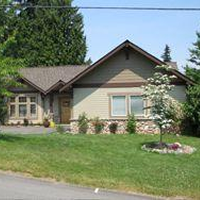 #1 Amazon
#1 Amazon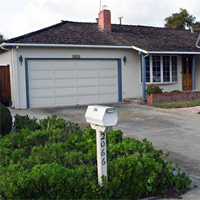 #2 Apple
#2 Apple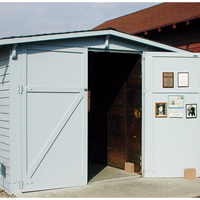 #3 Disney
#3 Disney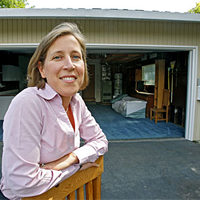 #4 Google
#4 Google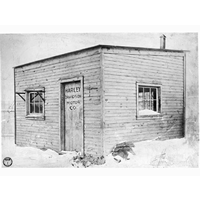 #5 Harley Davidson
#5 Harley Davidson #6 Hewlett-Packard
#6 Hewlett-Packard #7 Lotus Cars
#7 Lotus Cars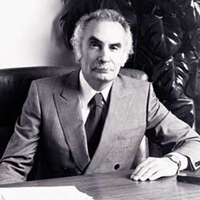 #8 Maglite
#8 Maglite #9 Mattel
#9 Mattel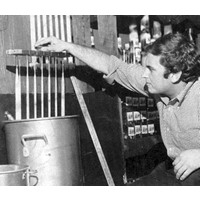 #10 Yankee Candle Company
#10 Yankee Candle Company